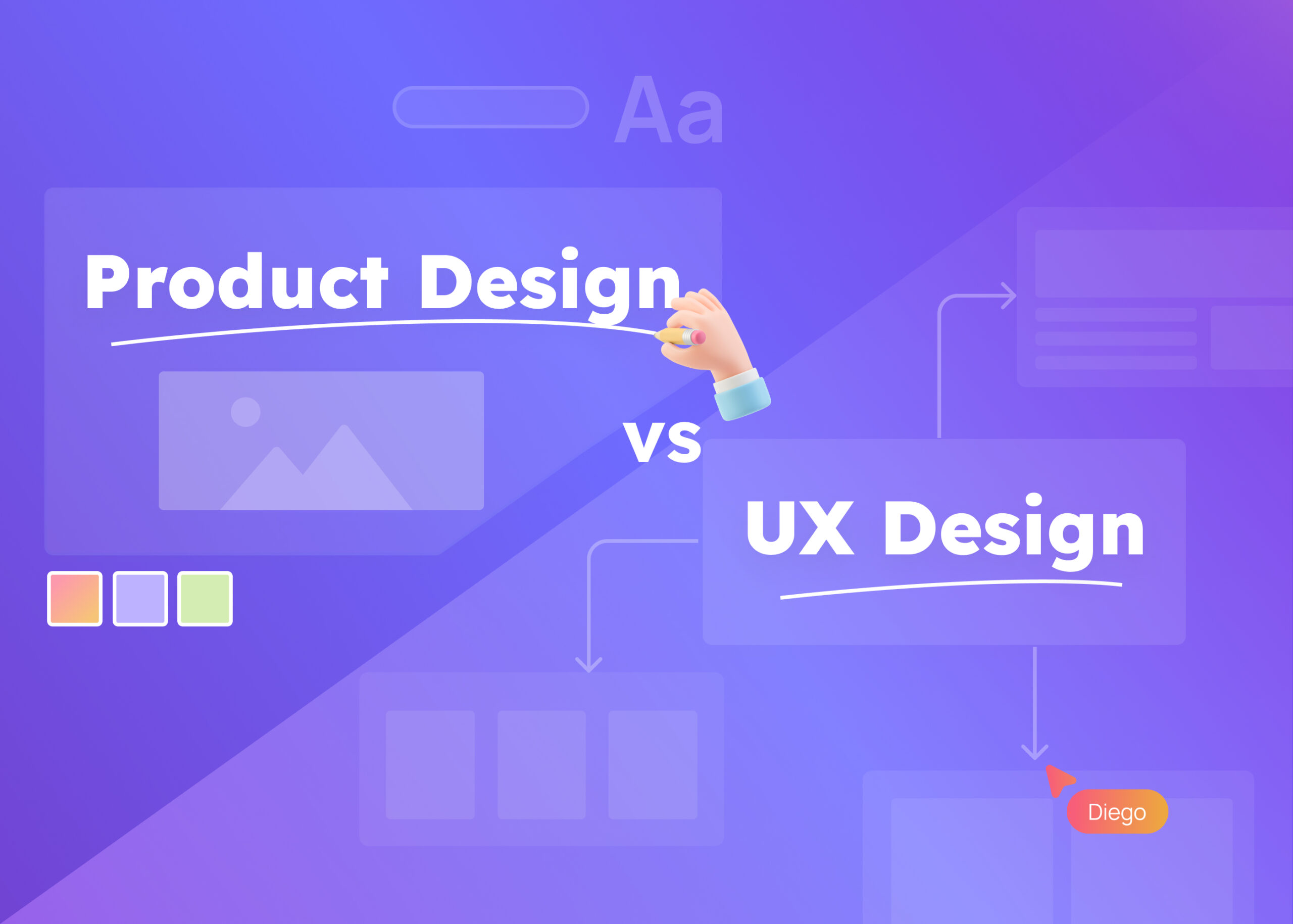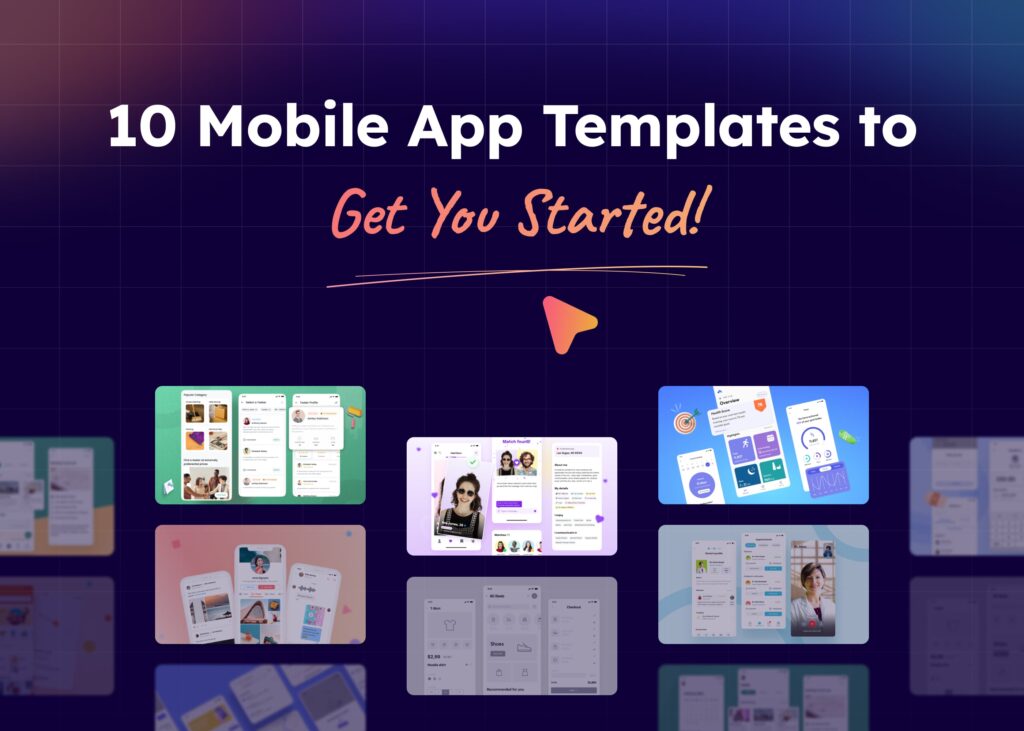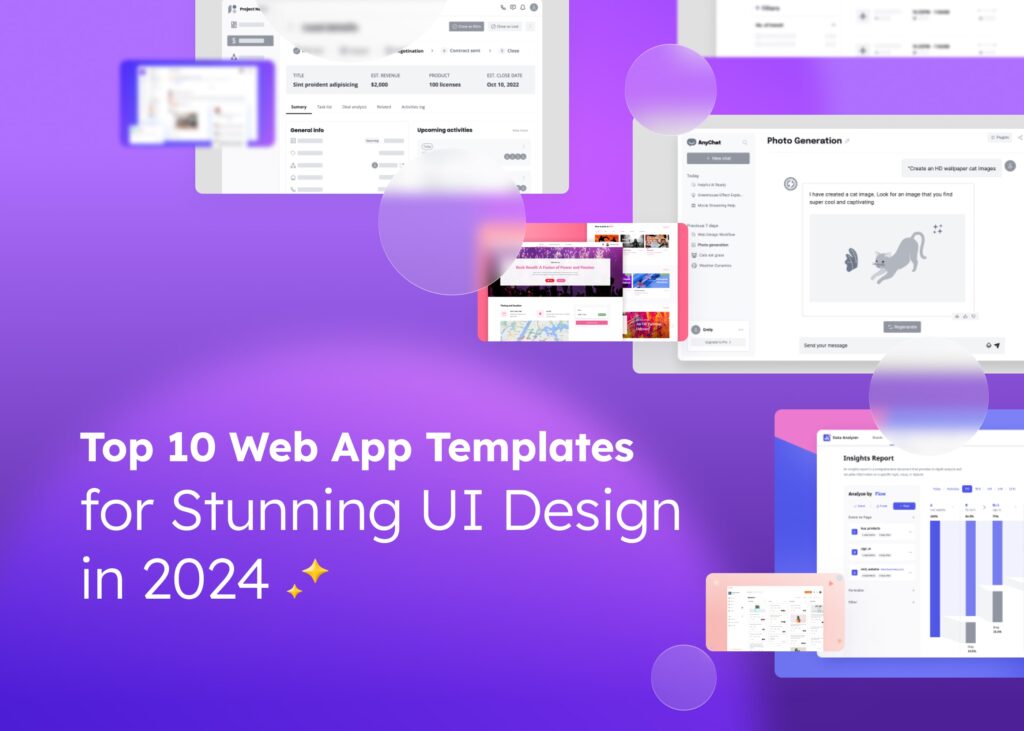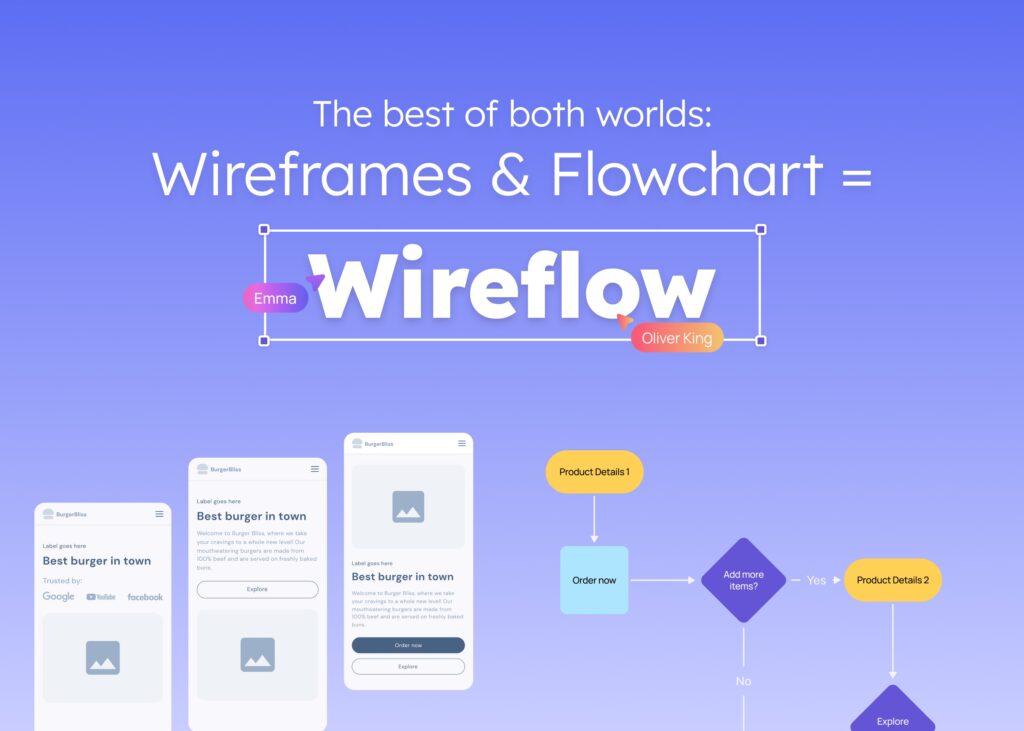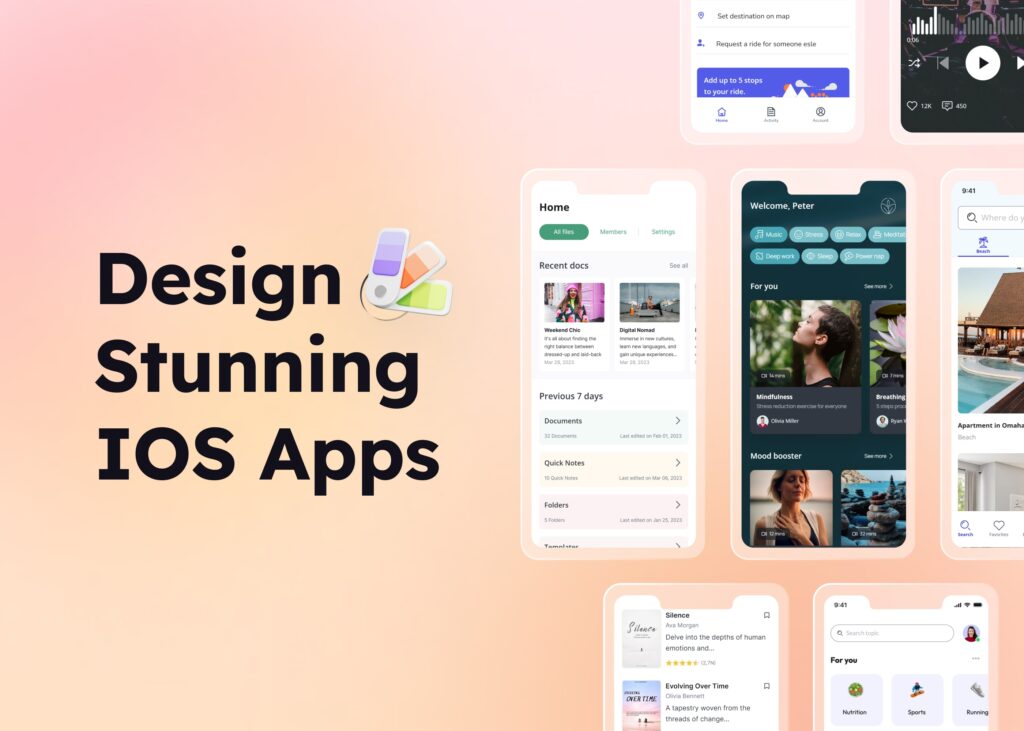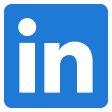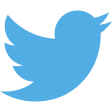McKinsey says businesses with good design get 32% more revenue and 56% more returns on shareholders’ investments.
Good design is more than just images and layouts — it also has good UX (user experience) to make visitors feel comfortable about the website and product. Plus, the end product needs to meet the needs of users and the business.
To help reach both of these vital goals, the design world has two important specialty roles: UX design and product design.
The classic UX design vs product design debate is common among designers and startup founders. In this article, we’ll discuss the differences between both terms and give you some tools that you can use to make each process a lot easier.
Product design vs UX design: an introduction
Digital product design and UX design help introduce products or improve existing ones by solving issues and meeting needs. Each specialty is equally significant.
UX design focuses on user engagement, while product design focuses on how well the product meets customer needs.
Let’s break down both terms in more detail below.
What is product design?
Product design is a combination of many disciplines. It’s dedicated to crafting and refining user-friendly digital experiences, like websites, mobile apps, software interfaces, and interactive platforms.
Product design aims to provide a smooth, intuitive, and aesthetically pleasing experience that meets the demands and desires of the intended users.
Product designers need to understand human psychology, information organization, and usability concepts to help them build products. They use their knowledge in these areas to design interfaces and interactions that guide users through an effortless and pleasant experience, making sure that each encounter is optimized for interaction and delight.
You can listen to this whole blog in our Audio blog:

One great example of good product design is Spotify. One way that Spotify has perfected personalization is through its “Made for You” feature. They don’t subscribe to the idea that one approach works for everyone, and they strive to stay current in their designs. They have the aptitude to accurately display to the user what they want, precisely when they want it and in a suitable environment.
The human connection and bond make the user feel valued and part of something. It makes them want to keep coming back to Spotify, instead of its rivals.
What is UX design?
UX design, or user experience design, is the practice of developing a product to create a seamless and intuitive experience for its users.
Good UX design makes products easy to use and helps viewers feel connected to the product. UX design isn’t just about the UI (user interface) but also encompasses the full user experience.
UX designers take part in product design right from the start. A lot like product designers, they also explore people’s psychology, user behavior, and preferences to produce captivating and user-friendly digital experiences.
They research users, design wireframes and prototypes, and work with team members to make the product meet customer requirements and company goals.
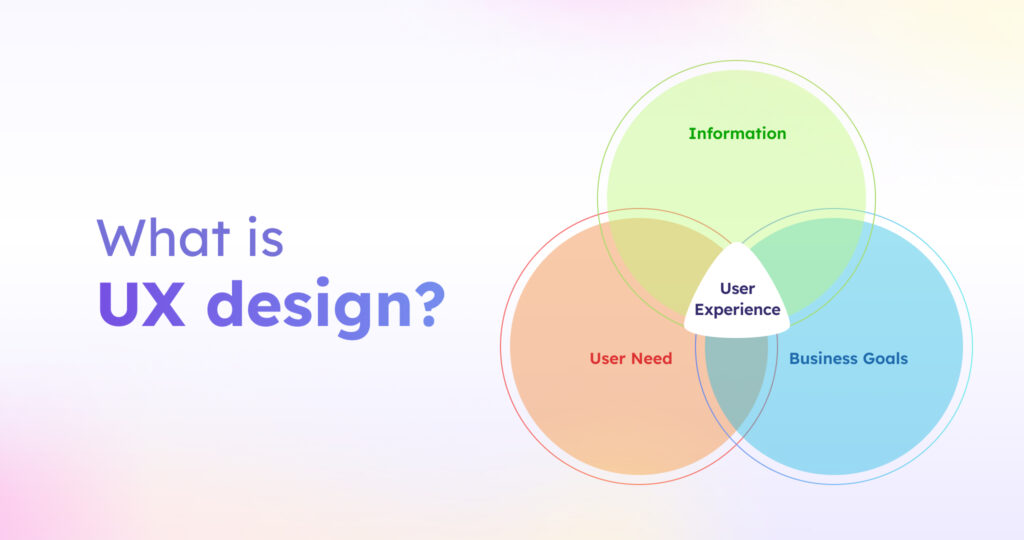
A great example of good UX is the Apple Store, which has an interface that’s visually attractive, straightforward to use, and captivating without being overly crowded.
Product design vs UX design: Differences and similarities
The difference between product design and UX design is the purpose of each design process.
Product design concentrates on the overall relationship between the customer and the product. It asks questions like:
- Is this product cost-efficient?
- Does this item line up with the organization’s short and long-haul objectives?
- What will this product resemble in two years?
UX design focuses on enhancing user satisfaction and improving the overall experience. UX designers ask questions like:
- Does the user appreciate this product?
- What advantages does this product/feature offer to our customers?
- How can we make this product more straightforward to use?
Product design focuses on building a relationship between the product, the user, and the business. UX design focuses on usability and the customer experience when interacting with the product.
Let’s look at the distinctions between these design approaches in the section below.
How are product design and UX design similar?
It makes sense why people draw comparisons between product and UX design, as they share several similarities.
Iterative design thinking process
Iterative design is necessary for both UX and product design. This means improving the product to make it more attractive to its target users.
Cross-functional collaboration
Product and UX design is good for you if you like working with different people from different areas and departments. Both roles involve working with many other teams to make sure the end result is good.
You don’t have to be an overall specialist; these roles require you to understand how to collaborate with various experts and teams in your organization.
User-centered process
Product and UX designers must contemplate the final product’s implications on users.
Moreover, both design approaches are based on thorough user research, as it is only possible to accurately adapt a product to its future (or present) users when all the facts are known.
Furthermore, both positions require some market research to be successful. Whether you are a product designer or UX designer, it is necessary to understand what the users require to make a product that works.
Tools of the trade
Product designers commonly employ the same tools that UX designers use. For example, both developers and designers often use Visily as their design, wireframe and prototype tool.
How are product design and UX design different?
While both roles are super similar, they’re still massively specialized and unique for a few critical reasons. Let’s explore how they’re different below.
Mindset
Product and UX designers have overlapping roles, but the underlying motivations and, therefore, the mindset they use for their actions are different.
Product designers think about how their products will fit into the customer experience. They consider things like the economy, the sector of your company, competing offerings, and the requirements of those with an interest. Their responsibility is to make sure the product works well, looks good, and appeals to its target audience.
Product designers must make products that are prosperous when launched and remain relevant long-term. Unlike UX designers, product designers consistently work on the same product, making modifications to improve its design.
Product designers must keep the company’s long-term objectives in mind to guarantee their creations will remain useful as the business evolves.
UX designers are taking an alternate approach. A UX designer primarily focuses on how people interact with the product rather than the business, design process, or cost considerations that a product designer is concerned about. UX designers strive to create a product that hits the mark for their users by carefully monitoring customer satisfaction.
UX designers often put great effort into a product before it is released to the public. Once they have done that, they may go back to the product to rethink its design; however, usually, they’ll move on to the next job in their pipeline.
Product designer vs UX designer
Product and user experience designers work together to create user experiences for digital products. But their skills are different. Product designers focus on creating products, while UX designers focus on improving user experience.
Product designers and UX designers must have the specialized abilities required to deal with the intricacies of the entire design process and create results-oriented solutions to be successful in their respective fields.
Product designers and UX designers need a mix of common and unique skills.
Product designer skills:
- Visual design skills, including expert knowledge of typography, color theory, layout, and composition
- User-centered design and the capacity to comprehend and sympathize with the desired audience
- Prototyping capabilities to form interactive prototypes for user testing and input on new products
- Information architecture expertise in structuring and organizing information for effortless navigation
- Strong teamwork and communication aptitudes for successful cooperation with interdisciplinary teams
- Project management know-how and technical skills
UX designer skills:
- User research by speaking with them, conducting usability experiments, and plotting user journeys
- Expertise in blueprinting tools and programs
- Compassion and knowledge of user sentiment and behavior
- Converting user comprehension into logical and captivating digital experiences
Because of the need for different skills, product and UX designers will have to study different things. However, UX design is a lot easier to learn than product design.
Use Visily for product design collaboration
A digital design project’s success is contingent upon collaboration with product testers, beta users and colleagues, design partners, and all the other people involved. Successful product designs require a steady supply of new data and suggestions that can be implemented and verified. Visily’s smart collaboration features make collaborating easier and faster than ever, which helps simplify your design process.
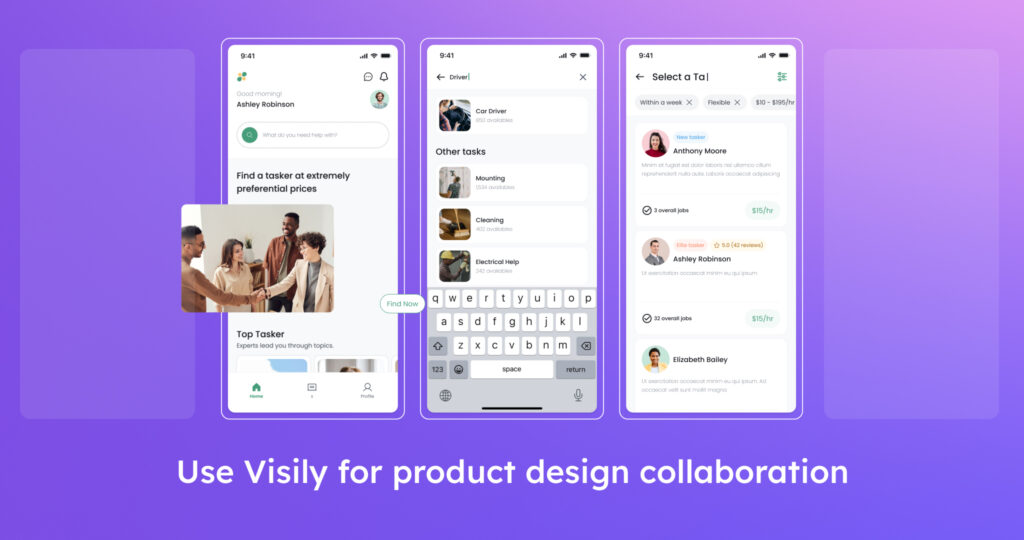
Visily is free and a breeze to learn for those new to the platform, which means you can work with your colleagues on your app, web, or tablet design faster than you can say “minimum viable product”.
Using Visily for UX design
Visily is an excellent platform for beginners and advanced designers, allowing them to create a UX design quickly and easily. Jump-start your UX design project by selecting from an array of 1500+ UI templates, granting you access to pre-made components and elements, AI features, and a range of user experience features.
One UX feature that Visily offers is a user flow mapping tool. This allows you to trace the paths of users between different design screens. Press the lightning symbol close to the part you prefer, and join it to the element you want. You can then try out your UX design by selecting the prototype mode in the upper slide menu.
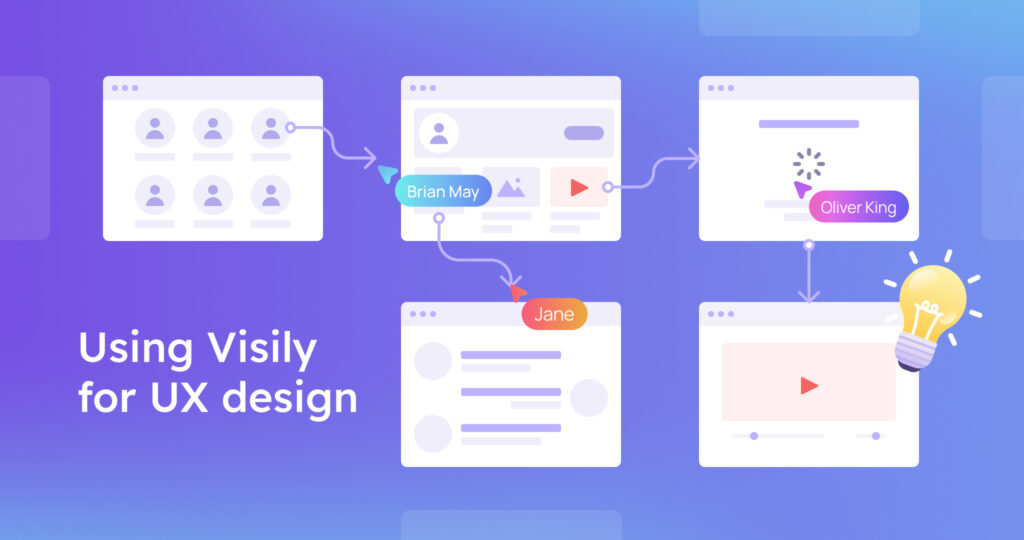
Embrace the abilities of product design and UX design!
Product and UX design are two distinct disciplines that work together to make digital products successful. Businesses and designers must understand these two fields’ differences and similarities to create user experiences that meet expectations and succeed.
As the digital landscape changes, product design, and UX design will become more important. Organizations can use the strengths of both disciplines to create innovative and user-centered products.
Do product designers or UX designers make more money?
Product designers make on average, slightly more than UX designers.
Glassdoor reports that, on average, product designers in the United States receive a total annual compensation of roughly $105,000, although their salaries can differ greatly. In the US, the average total compensation for UX designers is nearly $103,000.
Are product designers in high demand?
Yes, product designers are in high demand and because the field is always growing and evolving, they're likely to stay in high demand for a long time.
How do product designers and UX designers collaborate?
Product designers and UX designers join forces to ensure that the visual and interaction design of the product is in harmony with the user experience objectives. They do this by exchanging knowledge, discussing concepts, and collaborating closely.
Which is a better job, UX designer or product designer?
Both positions present their distinct advantages and difficulties. As a product designer, you can shape the digital world and design meaningful user experiences while keeping up with new technologies. If you have a knack for designing user-friendly interfaces, gathering data on users, and analyzing their activity, then UX design is an ideal career choice for you. UX design is also a lot less stressful than product design.
